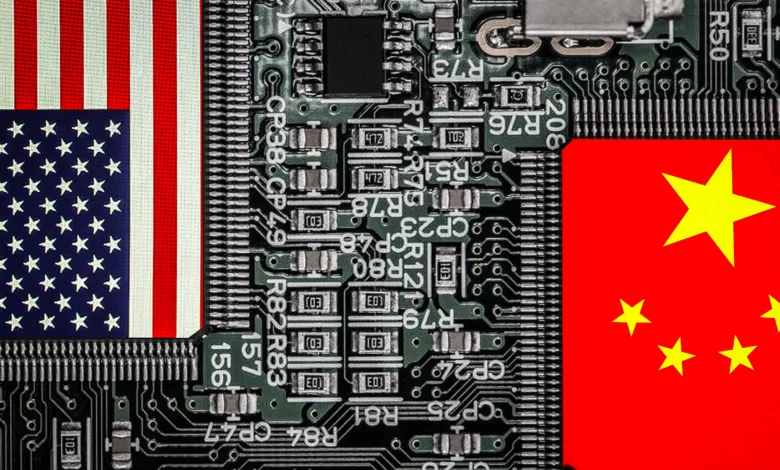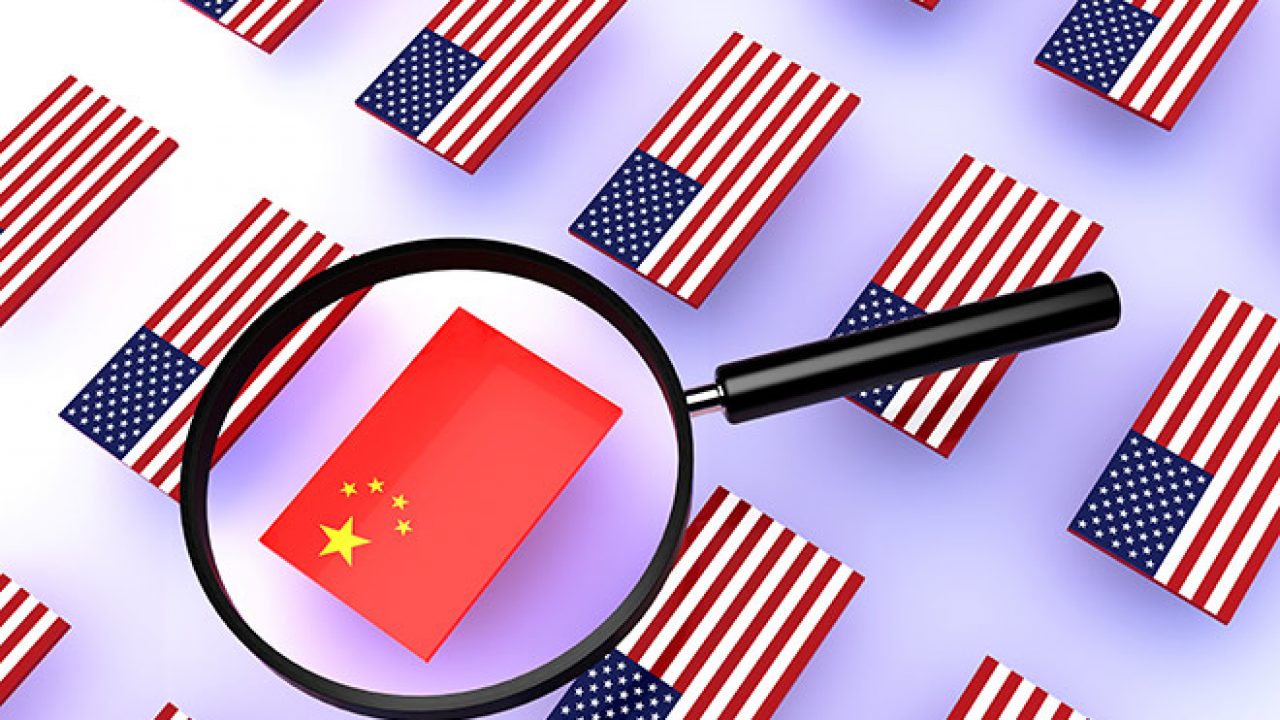Us china tech war?

Introduction
The US and China are currently locked in a full-fledged tech conflict. Although it started during the Trump administration, US President Joe Biden is still pursuing it. In actuality, Biden has positioned US rivalry with China as the pivotal front in a long-running conflict between democracy and authoritarianism. The tech war began as a trade conflict but quickly turned into a competition for supremacy in key fields including 5G, artificial intelligence (AI), and semiconductors.
The US has been the world’s technological leader for many years thanks to its long history of research and development (R&D) and creation, but China is now challenging that position by investing tens of billions of dollars in state support in its bid to overtake the US. 
Beijing stepped up efforts to “de-Americanize” its supply chain when Washington started restricting China’s access to key US-controlled technology like semiconductors. Biden issued an executive order to investigate US supply chains for key items including semiconductors, batteries, rare earth, and medical supplies after the worldwide epidemic added to tensions between the two countries.
Bipartisan support has also been seen in Washington for legislation calling for major increases in US investment and R&D spending on key technologies. In October, Washington passed some of the strictest export laws ever, requiring permits for companies shipping semiconductors. No matter where in the world they were developed, everything produced with US hardware or software must be exported to China.
Additionally, US citizens and those in possession of green cards are prohibited from working for some Chinese semiconductor firms due to Washington’s laws. Green card holders who live permanently in the US are allowed to work there. It is cutting off a crucial pathway for American talent to visit China, which will have an impact on the advancement of high-end semiconductors.
- What started the tech war?
The tech war was sparked, according to analysts, by Made in China 2025, Beijing’s 10-year plan to turn the nation from a “manufacturing giant into a world manufacturing power”; however, the US reacted later than expected because it was preoccupied with the 2016 presidential election campaign at the time MIC 2025 was announced in 2015.
China hawks like trade adviser Peter Navarro and Senator Marco Rubio alluded to MIC 2025 as a “brazen” example of the Chinese government disobeying international trade agreements by providing state subsidies to its tech industry after Donald Trump won the presidency. Several unrelated incidents including the imposition of fines and sanctions on Chinese telecoms giant ZTE for concealing its role in forced technology transfers, and worries about Huawei Technologies’s dominance in 5G technology emerged into a broader tech war that attracted bipartisan
- Concerns in the United States over China’s technological advancement
The US has been concerned about China’s technological advancement and the associated industrial espionage and cyber theft. When the U.S. trade representative released a lengthy report in 2018 outlining China’s alleged transgressions against the United States, they came to light. The memo emphasized Washington’s recognition that the Chinese economy is entirely state-led rather than market-driven. The U.S. government claims that China’s economic policy relies on luring international businesses into the country, stealing their technology, and localizing it before driving the businesses out of the Chinese market. The U.S authorities believe that there are only a few, well-established processes in this process.
The Chinese government requires foreign businesses seeking to enter the Chinese market to enter into joint ventures with Chinese businesses. These local businesses are just interested in stealing the technology secrets of their international competitors. The U.S Chinese , according to the Office of the National Counterintelligence Executive, are the most aggressive and persistent offenders of economic espionage,” which is a well-known problem. As an alternative, China can compel Western companies to sell their technology to their Chinese partners for exorbitantly low rates.
Chinese firms copy Beijing’s sought-after technology after it has been gathered. This is the infamous moment when international companies discover that a factory very similar to their own has recently been established nearby. Oddly, the Chinese factory produces perfect duplicates of Western goods. Washington thinks that Beijing will eventually expel foreign corporations from the country. Theoretically, this makes sense: Once Chinese companies gain access to foreign technology, Beijing could not see much of a reason to allow rival international enterprises to continue operating in its local market.
Although widely acknowledged, these unethical tactics are merely one facet of American problems with China. The U.S. administration has also grown more concerned in recent years that allowing Chinese technology businesses to operate on American territory or allowing U.S. government agencies to employ Chinese-made technology compromises national security.
The controlled-burning drones were grounded on the West Coast for this reason. But the problem is not just with drones. The claim is that all of China’s high-tech firms are affiliated with the Chinese government and may be forced to acquire information on their Western clients in secret.
These reservations seem reasonable on paper. Although there are no records of such an incident, China’s national security law may compel Chinese corporations doing business in the United States to gather data on Americans and give it back to Beijing. Chinese businesses are legally prohibited from objecting to Beijing’s wishes, so they are left with little alternative except to collaborate with it. Numerous American companies already take these challenges seriously. For example, China-proof technology is required for Google and Facebook’s technological suppliers.
This makes Chinese-made cellular towers placed close to governmental structures, such as federal offices or military facilities, a particularly serious threat. This is the main point of contention in the discussion surrounding Beijing’s involvement in the worldwide implementation of 5G telecommunications networks. Defense hawks think China may eavesdrop on important locations using the infrastructure. Supporters of China are eager to point out that these worries are hypothetical and unfounded.
However, there are examples: China was charged with spying on the African Union headquarters in Ethiopia on two consecutive occasions. The African Union has also—though puzzlingly—downplayed the claims, which Beijing and the Chinese businesses accused of being involved have rejected.
The worst-case scenario envisioned by the American security establishment is far more worrisome. Some analyst’s worry that putting telecommunications gear built in China on American territory may give Beijing the power to shut down American phone or internet networks.
The majority of analysts think that this is not possible. In any case, it seems implausible that the U.S. economy will collapse and cause China’s growth to collapse. Beijing’s long-term capacity to persuade nations to install Chinese telecom equipment would suffer if it took such a drastic step. However, Beijing would have little to lose if the United States and China engaged in a direct military battle, such as one involving Taiwan.
- According to the US, China’s use of the technology endangers its own national security.
Modern electronics are used to power military hardware, supercomputers, and artificial intelligence.US Commerce Department Undersecretary Alan Estevez released the rules, saying his intention was to ensuring that the US was taking all necessary measures to prevent China from getting “essential technologies with military consequences. The threat environment is always changing, so we are updating our rules right now to make sure we are addressing the issues, he added. However, China has labeled the limitations as “technological terrorism.
Three Asian countries that produce chips, Taiwan, Singapore, and South Korea, have voiced concern about how this bitter rivalry is affecting the global supply chain. Additionally, three significant developments in the chip battle occurred over the preceding week. Washington’s “entity list” now includes 36 more Chinese companies, including YMTC, the biggest chip maker. It indicates that in order to offer them certain technology, American enterprises will need government clearance, and that it is difficult to come by.
The US bans have a wide range of implications.UK-primarily based totally pc chip business enterprise Arm recounted that U.S and U.K restrictions hindered it from selling its most innovative ideas to Chinese businesses, such as e-commerce giant Alibaba. In a statement, Arm stated that it was “dedicated to compliance with all applicable export laws and guidelines in the jurisdictions in which it operates.
- China complains to WTO
China has filed a complaint with the World Trade Organization (WTO) against the United States over its export limitations on semiconductors and other related technologies. This is the first WTO dispute Beijing has filed against the United States since President Joe Biden took office in January 2021. In its WTO application, China argued that the US is misusing export limits to retain “its supremacy in research, technology, engineering, and manufacturing areas. It stated that US measures jeopardized “the stability of the global industrial supply networks.
In response, the United States stated that the trade group was “not the right venue” for resolving national security problems. Thea Kendler, US Assistant Secretary of Commerce for Export Administration, stated, “US national security interests necessitate that we move decisively to protect our exports. In response, the US stated that the trade group was “not the right venue” for resolving national security problems. According to the lawsuit, the US has restricted the shipment of over 2,800 Chinese products, although only 1,800 of them were permitted by international trade laws.
The US has 60 days to attempt to fix the issue. Otherwise, China will be able to ask for a panel to look at its case. The WTO determined earlier this month that US tariffs on steel and aluminum enacted by the US under former President Donald Trump were unlawful. Tariffs apply to two thirds of the products that China exports to the US. The US stated that it “strongly condemns” the decision and would not be eliminating the sanctions.
In order to enable new goods, chipmakers are also under pressure to provide increasingly sophisticated processors. In order to put it into perspective, a human hair is between 50,000 and 100,000 nanometers long. Analysts claim that US restrictions might further isolate China from other chip-producing nations, despite Beijing’s clear declaration that it intends to priorities the production of semiconductors and establish itself as a superpower in the industry.
Conclusion
Two conclusions may be drawn from US authorities’ activities regarding the export of expensive chips to China and China’s weaknesses in its environment for technological growth. First, China’s goal of being self-sufficient in the semiconductor sector is still only a pipe dream. Second, China must continue to rely on imports from other nations, if not the US, to maintain export-based development in the tech industry.
The Chinese aim of establishing parity with rivals and eventually becoming self-reliant is still dependent on chip imports, which is why the internal crisis occurs in the middle of the export control measures. In reality, if China can’t deal with the recent failures in its home economy, the dream might turn into a nightmare.
edited and proofread by nikita sharma




